How to Make the Perfect Bed
A Part of a Series on Deep Dives into Stuff I've Obsessed Over and Nailed (IMHO)
Every possible way of starting this guide is trite.
Either you have a visceral desire to sleep well, and amongst delicious materials (or such a desire was inspired by sleeping in a bed somewhere that awoken that desire in you), in which case you should continue reading this guide. Or you don’t, in which case this guide is not for you.
Sleep is important. And you either believe or don’t believe that the objects you sleep on and under effect that sleep. I am not here to convince you of this.
For me, I adore linens. I love good sheets, good towels, and even good cleaning rags. I used to buy IKEA sheets, but now, I wouldn’t dare. (They do make a few pillows I am not mad about, though.) It is my love for textiles, and the intrinsic desire to sleep amongst nice bedding that keeps me seeking beyond just what sheets look like, but also what they feel like and how they wear over time.
Assuming a similar desire exists in you, or you just want to know my sleeping setup, read ahead.
Alternatively, just browse the spreadsheet.
2025 UPDATE:
So many of you have ordered from this list and given me updates on quality etc. Products that no longer have the same quality as when I purchased them have been struck-through like this. New product recommendations will replace them in time.
Before we jump in, you need to know two things:
Not all linens are created equal.
Quality is paramount in this hobby, and targeted ads can be misleading.
Avoid direct-to-consumer brands like Brooklinen or Quince. They often lack the quality of higher-end brands and aren’t necessarily cheaper.
In this guide, I’ve only included products I have personally bought, used, and tested over months. These recommendations are based on extensive research and experience. With a bigger budget, you can find better options, but you won’t find new1 products cheaper than these.
Building a bed is like following a recipe, measurements matter.
Beds and linens have different measurements worldwide. (This guide focuses on Western bed-making styles.)
Be cautious with brands like Zara and IKEA, as their sizing can vary to keep you within their ecosystem.
I have added dimension to the spreadsheet, be sure to cross check when ordering if you are ordering different sizes.
Step 1: Mattress
Choosing a mattress is a full-time job. May I introduce you to the Princess and the Pea?
Long story short, if you want something firm but soft, qualities I have come to appreciate as someone with chronic back and neck issues, these are good options:
The Wink bed (US): Crazy heavy.
The Matt bed (EU): Crazy light.
Choosing the right mattress is crucial, but it needs its own guide. For more info, check out The Nap Lab or Reddit’s Best Mattress Recommended for 2024.
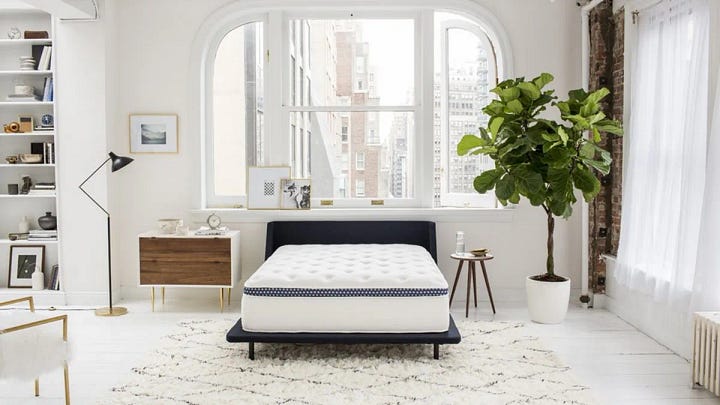

Step 2: Pillows
Also called pillow inserts, this is what goes into your pillowcase.
You’ll want at least two pillows per sleeper.

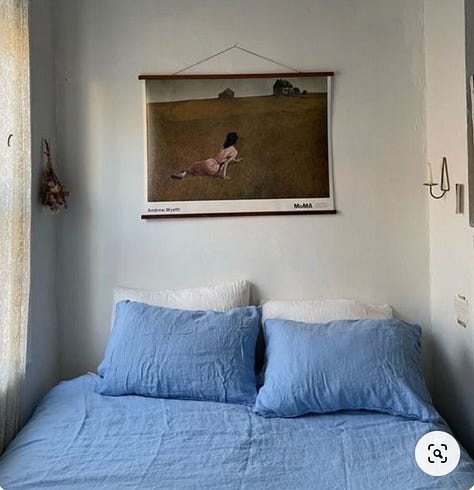

First, the primary pillow should be unique to any sleeper. This is possibly your most important purchase besides your mattress. Try lots of pillows until you fall in love, it can take a while, so make sure the return policy gives you enough time to try it out!
Second, you will need secondary pillows for aesthetic uniformity or support. Here are some considerations:
do you want to read a book in bed, you’ll need a pillow that can support you.
do you want to lounge around, perhaps you’ll need lots of pillows that can support you.
do you only want to sleep and never hug a pillow for support or comfort, then just find one pillow you love and call it a day.
do you want your bed to be dripping with shape and maybe even texture, get as many secondary pillows as your heart desires (just think about where you will place them at night, the floor is very dusty…)
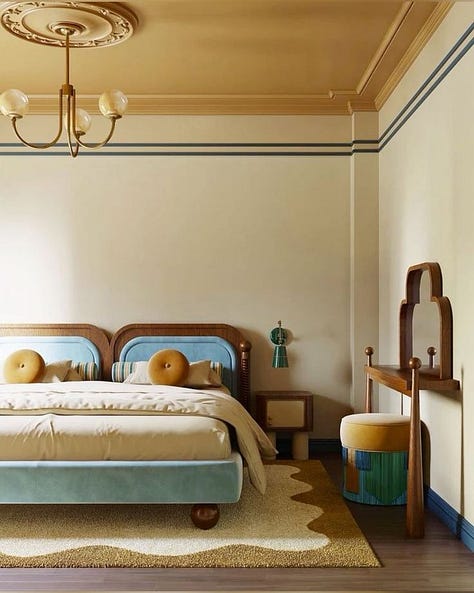

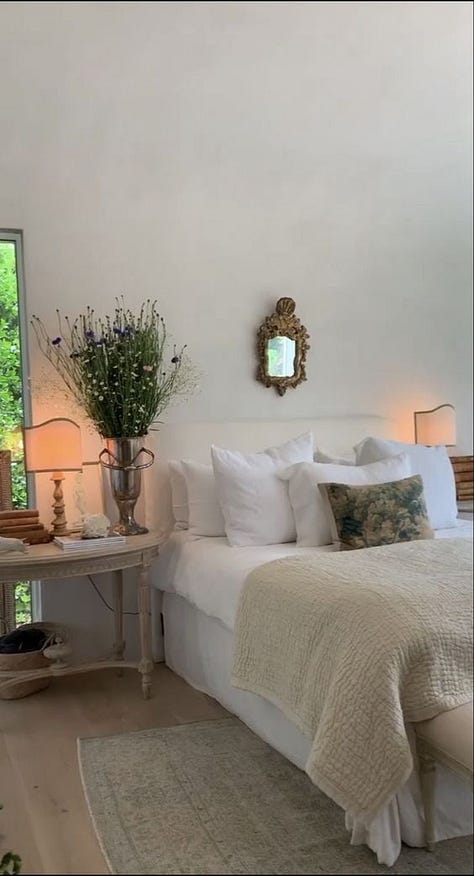
My Pillow Setup
Primary Pillow: Foam is my preference. I currently use pillows from Amazon (EU) but have also enjoyed IKEA’s KLUBBSPORRE (US) *Only use the Klubbsporre with the Sefra protector, somehow it is not as nice without. I have been meaning to try millet pillows, I will update this article when/if I do.
Secondary Pillow: Feather/down works well for me. I use secondary pillows from IKEA for reading support and lounging.
Pro Tip:
If you like mixing things up with patterns, colors, or prints in your linens, stick to one size pillow for the most versatility (e.g., on a queen-size bed, 2 primary pillows in a queen-size and 2 secondary pillows in a queen-size). In this way, if all of your pillows are queen-sized, then all of your pillowcases are queen-sized, etc., you can mix and match.
Step 3: Duvet or Cover
This is what goes on top of you when you sleep.
At fancy places, like 5-star hotels, you will typically find duvets with a duvet, and a duvet cover, and a flat sheet. But that in no way reflects the best way of sleeping. You should take into consideration what makes you comfortable:
what seasons/temperatures do you sleep in?
do you have weight preferences (do you like a heavy or light cover)?
do you get too cold or too warm?
do you sleep with someone else?
is making the bed hard for you?
etc.

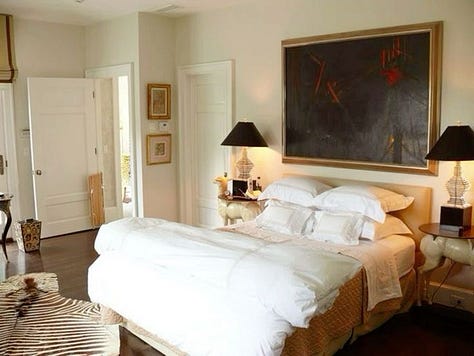
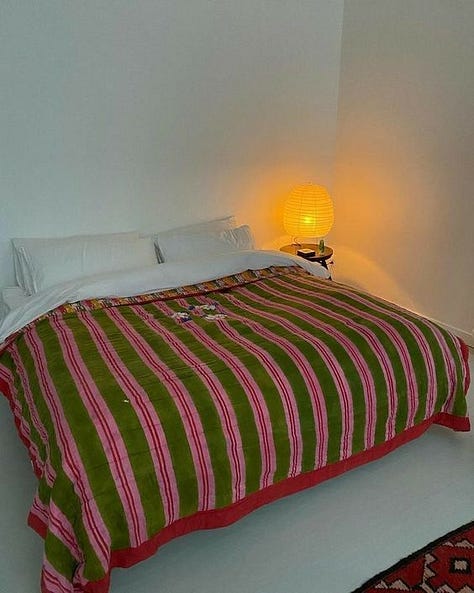
What is the difference between a Duvet and a Cover?
A duvet (sometimes called an “insert”) is a batted cover where pockets are filled with a specific material (down, wool, silk, TENCEL, etc.), it is meant to be covered in a duvet cover where the duvet cover is what is laundered and the duvet is not.
A cover can be a quilt, a coverlet, a blanket, or a counterpane. It is not meant to be laundered either, but instead of a cover, it is kept clean with the use of a flat sheet and/or duvet.

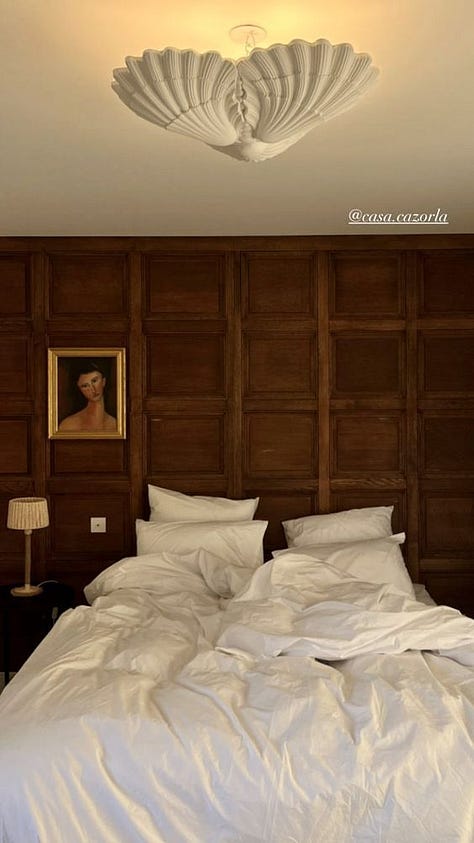
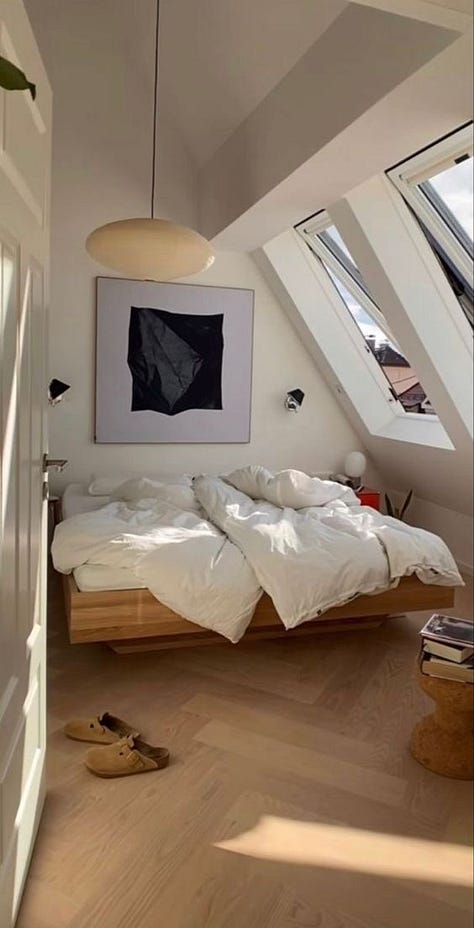
The Varying Bed-Making Styles
There are three (Western) sleeping styles: Scandinavian-, European-, and American- style.
The American-style, which is most likely how you are already sleeping, includes a fitted sheet, a flat sheet, a single blanket or duvet (or many-layered), and (often) multiple pillows. In other words, you have one cover that goes across the entire mattress with a flat sheet between the sleeper/s and the duvet or cover.
Hospital corners, in my opinion, make or break the experience of sleeping in this style. (Flat sheet gets all tangled: immediate bad night sleep.) This is the most versatile style, stylistically, as the blanket can be changed for a duvet across the seasons, allowing for visual variation too.



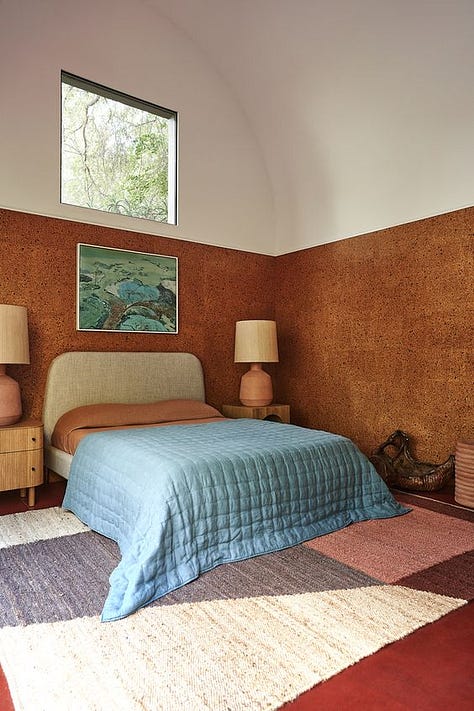


The European style features a duvet with a cover, no top sheet, and fewer decorative pillows than the American style. Folding the duvet in half towards the foot of the bed during the day is a popular way of airing out the blanket.



The Scandinavian style, which is often also found in Germany, is where a bed is made by the number of people in the bed, and the bed is always made with a duvet. So for example, a double bed with one sleeper gets one single-sized duvet, while a double bed with two sleepers gets two single-sized duvets. For this reason, there is no flat sheet in the Scandinavian style.


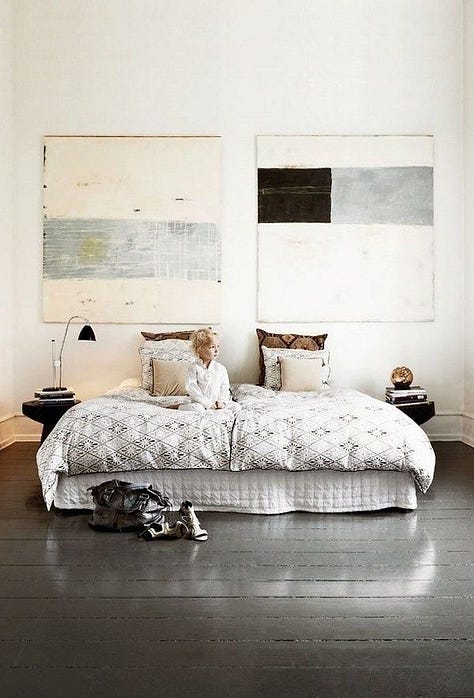

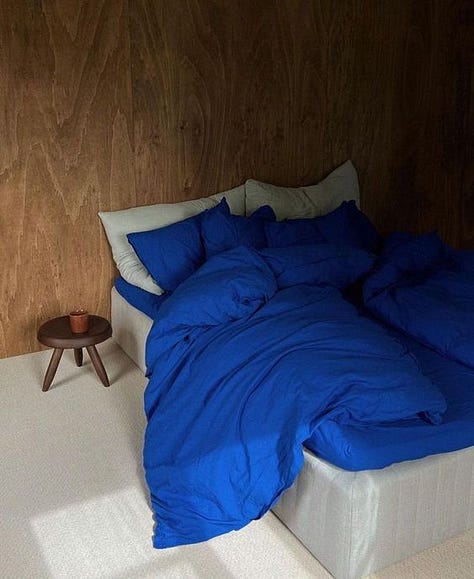
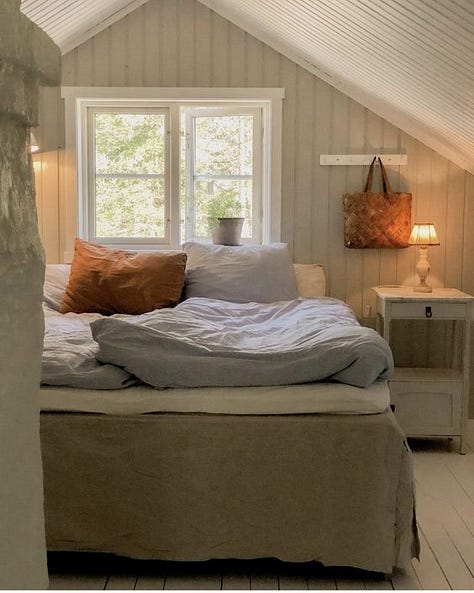
Cover Material
When considering the right material for you, think about what kind of weight and warmth you like. If you are sleeping in the Scandinavian style, know you will always be able to kick a leg or two out, which helps with temperature regulation.
If you have read this far, do NOT buy a synthetic cover/duvet, it will make you sweat. (Be careful with covers, often they are a natural material with a synthetic batting, be sure both are natural.)
Natural = Cotton (Percale, Sateen, Supima), TENCEL (wood pulp of eucalyptus trees), Bamboo, Silk, Linen.
Synthetic = Rayon, Satin, Polyester, etc.
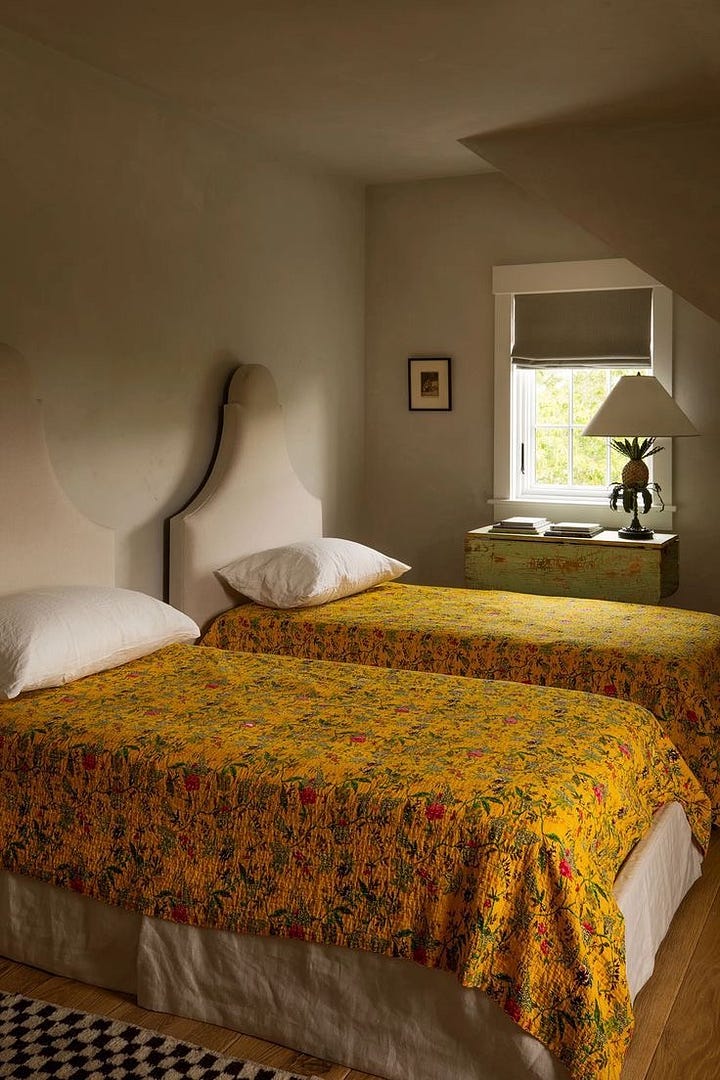

My Cover Setup
Firstly, I currently sleep in the Scandinavian style, I grew up sleeping in the European style, and, recently, I have been dabbling in the American style. My preference is by far the Scandinavian style because of the ease of making the bed. But close behind is an American style bed with tight nurse’s corners. (Honestly, while I appreciate the European style is very popular, I really couldn’t name a single upside other than styling.)
For my year-round duvet, I sleep with TENCEL. From March to November, or whenever it is warm enough that the heat isn’t on all night, I sleep under a duvet made by Yumeko. When it starts to get chilly, I will double them up. When that won’t do, I switch out to my winter duvet.
For my winter duvet, I sleep with White Goose Down. I bust this out when it gets too cold to comfortably sleep with the windows open in winter. I sleep under this duvet made by Costco.
Step 4: Linens
This is what covers your mattress, pillows, and duvet/covers.
Your linen needs will depend on your bed-making style:
American Style: 2 pillowcases per person, 1 fitted sheet, 1 flat sheet, 1 duvet cover or cover per bed.
European Style: 2 pillowcases per person, 1 fitted sheet, 1 duvet cover per bed.
Scandinavian Style: 2 pillowcases per person, 1 fitted sheet, 1 duvet cover per person.
Natural materials (cotton, linen, silk) are best. Avoid synthetics.
Protectors
Before we get into the visible linens, let’s talk about the base layer. Investing in luxury protectors at an affordable price is a smart move since they are cheaper than replacing your high-end linens.
Benefits:
Keep your bedding in good shape for longer.
Avoid the crinkly feel or sound that comes with cheap protectors.
A protector won’t protect from heavy stains, though, so be mindful about eating and drinking in bed. And don’t forget a mattress protector, it’s much cheaper than a new mattress.
Pillowcases
I only sleep with silk pillowcases on my primary pillow. Silk is good for your skin and hair, which is why I always recommend covering your primary pillow in a silk pillowcase and switching your pillowcases out often (at least once a week).
For secondary pillows, you might choose decorative pillowcases or those that match your sheets or duvet cover. (Hugging a silk pillow is also top-notch, so consider that too.)
Sheets
Since sheets bear the entirety of your body weight, they are some of the most heavily used linens.
Depending on your bed-making style, you’ll need either just fitted sheets (Scandinavian or European style) or both flat and fitted sheets (American style). Alternatively, you can ditch fitted sheets altogether and get a flat sheet that is one size bigger than your mattress. (I have yet to try this, but I think I will with my next sheet set.)
I suggest sheets that keep you cooler rather than warmer, as you can easily add or subtract blankets, but can’t easily switch out a sheet in the middle of the night.
Duvet Cover
If you are going for the Scandinavian or European style, or layering a duvet in the American style, you must use a duvet cover. You are throwing away your money if you don’t cover your comforter. Some people just use a flat sheet in the American style, which protects the duvet from skin contact but not from spills, crumbs, or stray legs. So please cover your duvet with a duvet cover, whether or not you are using a flat sheet.
My Linen Setup


First, I cover everything in protectors. It’s important to me that protectors are silent. Through trial and error, this is what I use:
US: Swiss Comforts Tencel Mattress Protector by Costco
EU: Matt mattress protector by Matt
US: Fiona Pillow Protector by Sferra
EU: Jersey 100% Cotton Cushion by Biberna
For my primary pillowcases, I sleep on silk.
EU and US:
THXSILK’s mulberry silk pillowcases. They’ve survived several accidental tumble dries over 4 years.
Secondary pillowcases are rotated seasonally.
Year-round: Macy’s Supima cotton pillowcases, crisp and give hotel bed vibes .
Summer: Zara’s washed linen pillowcases (160 GSM), light and durable (7 years).
Winter: Yumeko’s velvet flannel pillowcases, medium pile and barely pill.
I rotate my sheets seasonally.
Year-Round: Macy’s Supima cotton pillowcases or Zara’s percale cotton fitted sheet (300 TC), the Supima is more buttery while the Percale is more crisp.
Summer: Zara’s linen fitted sheet (160 GSM), like the pillowcases, they are light and give a lovely crispness when air dried.
I also rotate my duvet covers seasonally. But since it’s on top of me, I do use some warmer fabrics.
Year-Round: Macy’s Supima cotton duvet cover, it’s buttery and makes me feel like I’m in a hotel every night.
Summer: Zara’s washed linen duvet cover (160 GSM), they are my most used duvet, and have even survived sewing them to a smaller size and removing the stitches years later.
Winter: Yumeko’s velvet flannel duvet cover, they are a medium weight.
Step 5: Care
Linen Washing (min. every 2 weeks): Wash your sheets every two weeks and switch your pillowcases as often as you can. I sleep on each pillow for 2-3 nights before flipping it and then doing the same with the other pillow, giving me almost two weeks before washing pillowcases. This routine allows me to wash everything every two weeks.
Air Drying (Silk and Linen): You MUST air dry your silk to keep it from deteriorating. If you air dry your linen it will be a bit stiff, which some like. If you don’t like this, throw them in the dryer.
Bedding Hanging (min. every week): Hang your bedding out often, ideally outside, to keep them fresh and pest-free. This is easier with the Scandinavian style. In the winter or bad weather, or if you don’t have a way of hanging outside, hang over a door while you are out for the day, this gives both the bed and the sheets time to breathe.
Professional Cleaning for Dover/Duvet (max. once a year): In theory, you should not be washing this part of the bedding more than once a year. When you do, professional cleaning is recommended to maintain quality, especially for down duvets. You can wash and dry down in your dryer but it might not be big enough to fluff it back up properly. If you do, use new tennis balls to fluff it up. I have found that at-home cleaning has drastically impacted the life of my duvets (in a negative way).
Colors and Care: White linens are easier to wash (one load, hot, bleach, no issue). Colors need special care and are better for throw pillows, quilts, or coverlets that aren’t slept directly against.


Well, if you’ve made it this far, congratulations! You’ve just spent a good chunk of your life reading about bedding. (A personal dream of mine, and apparently yours too—or you’re just really bored.)
You now know everything there is to know about bedding—or everything I would have told you about the topic if you asked me, in any case.
Now, you too can make the perfect bed. (You’re welcome, another place to spend your hard-earned cash!)
So go ahead, treat yourself to that high-thread-count sheet set, splurge on a down duvet, and don’t forget the silk pillowcases (honestly, if you only take away one thing).
And if all this still sounds like too much effort, there’s always a trip to IKEA. 🍦 lol.
With that, sweet dreams, and happy bed-making.







